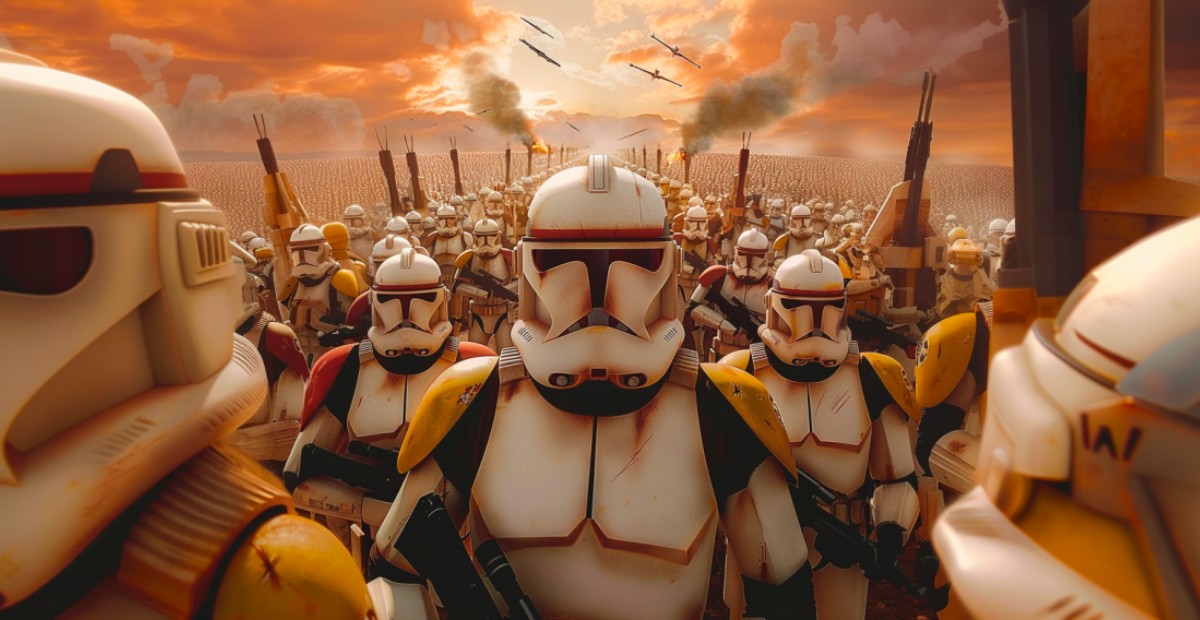In the realm of cinematic achievements, “Star Wars: Attack of the Clones” stands as a monumental testament to the power of digital technology in storytelling.
The creation process behind the iconic Clone Troopers and the film’s visual effects reveals a fascinating blend of cutting-edge digital artistry and practical effects.
Clone Troopers: Digital Soldiers
Animation Director Rob Coleman revealed that not a single Clone Trooper suit was physically built for the film; every Clone Trooper seen was a product of computer-generated imagery (CGI), animated through motion capture performances.
This approach allowed for an unprecedented scale of clone armies without the need for physical costumes.
Performers, equipped with only a helmet and sometimes footwear, acted out the scenes, with their performances captured and translated into the digital clones that audiences see on screen.
Explosions: A Blend of Real and CGI
Contrastingly, the film preserved a sense of realism through its use of practical effects for many of the explosions in the final ground battles.
Instead of relying solely on digital fireballs, the production team opted for real explosions, some of which were sourced from a library created for the Naboo Plains battles in “Star Wars: Episode I – The Phantom Menace.”
This blend of real and CGI effects enriched the film’s visual authenticity, grounding the digital spectacle in tangible reality.
Pre-Production: The Shift to Digital Animatics
“Attack of the Clones” also marked a significant shift in pre-production techniques, favoring digital animatics over traditional storyboards.
This method, pioneered by Ben Burtt, involved creating “videomatics” – rough scenes acted out in front of a green screen, later filled with CGI for a preliminary look at the final scenes.
These videomatics evolved into more detailed animatics, providing actors with a clearer understanding of the scenes amidst extensive bluescreen filming.
Digital Doubles: Revolutionizing Stunts
A notable innovation in the film was the introduction of “digital doubles” – CGI models that doubled for actors in ways traditional stunt doubles would.
Furthermore, the film featured a completely CGI-created Yoda, moving away from the puppet-based Yoda of previous films. This digital Yoda was meticulously crafted to mimic the appearance and movements of the puppet version, maintaining continuity with the character’s earlier depictions.
Yoda and Dooku: A Duel of Technology
One of the film’s highlights, the lightsaber duel between Count Dooku and Yoda, showcased the seamless integration of CGI and practical filmmaking.
Christopher Lee’s performance as Dooku was enhanced with a digital double for the most physically demanding scenes, with Lee’s face superimposed onto the stunt double’s body.
This crucial duel exemplified the film’s innovative approach to combining digital technology with traditional filmmaking techniques to create compelling and believable action sequences.

